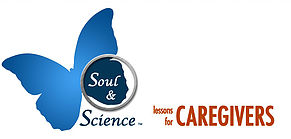BOOKS

Reminiscence and Life Story Work
―Faith Gibson, 2011
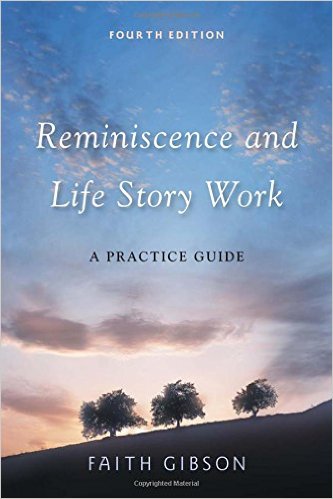 Reminiscence is a valuable tool for the professional carer as well as those who are looking after a family member or friend. It enhances and enriches the care relationship, and benefits both the person being cared for and the carer. This fully-updated fourth edition is full of practical information on planning and running successful reminiscence work. It will enable carers and health and social care practitioners to develop the attitude, knowledge, understanding, values and skills they need to use reminiscence with people of all ages, either individually or in groups, and in residential or community settings. Topics covered include reminiscence with individuals and couples, inter-generational reminiscence, reminiscence with individuals from minority ethnic groups and reminiscence with people with sensory and learning disabilities, dementia, depression and terminal illness. This book is the ideal starting point for any professional taking up reminiscence work, as well as for those who wish to deepen their knowledge and increase their ability to help those they care for in less formal ways.
Reminiscence is a valuable tool for the professional carer as well as those who are looking after a family member or friend. It enhances and enriches the care relationship, and benefits both the person being cared for and the carer. This fully-updated fourth edition is full of practical information on planning and running successful reminiscence work. It will enable carers and health and social care practitioners to develop the attitude, knowledge, understanding, values and skills they need to use reminiscence with people of all ages, either individually or in groups, and in residential or community settings. Topics covered include reminiscence with individuals and couples, inter-generational reminiscence, reminiscence with individuals from minority ethnic groups and reminiscence with people with sensory and learning disabilities, dementia, depression and terminal illness. This book is the ideal starting point for any professional taking up reminiscence work, as well as for those who wish to deepen their knowledge and increase their ability to help those they care for in less formal ways.
Where To Go From Here
– Dr. James E. Birren, 2012
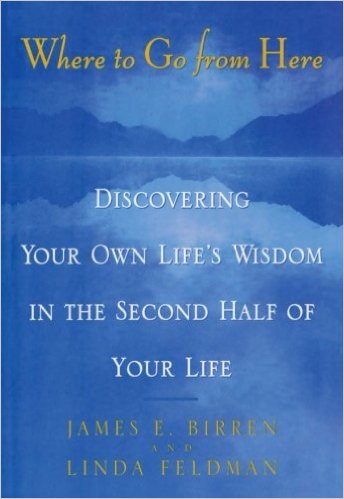 Jim Birren, the pioneer of guided autobiography, has developed a remarkable process that encourages people to take stock of their lives so that they can move forward, reinvigorated, into a vital, rewarding future.”I want you to think of your life as an autobiographical story with a past, present, and a future yet to be plotted”, Jim Birren writes, as he urges readers to appreciate all they’ve been through, survived, and accomplished; figure out what is missing; and decide how they want to spend the rest of their lives.By contemplating our lives, or telling our stories in small groups where other people’s memories prime our own, we can increase the chances of getting the most return from the years ahead. Cautioning that there is no magic carpet ride to a blissful elderhood, Jim Birren offers readers the ability to let go of the fears from the past, to understand and be themselves, and to see the future as a wonderful adventure. The result is living longer better.
Jim Birren, the pioneer of guided autobiography, has developed a remarkable process that encourages people to take stock of their lives so that they can move forward, reinvigorated, into a vital, rewarding future.”I want you to think of your life as an autobiographical story with a past, present, and a future yet to be plotted”, Jim Birren writes, as he urges readers to appreciate all they’ve been through, survived, and accomplished; figure out what is missing; and decide how they want to spend the rest of their lives.By contemplating our lives, or telling our stories in small groups where other people’s memories prime our own, we can increase the chances of getting the most return from the years ahead. Cautioning that there is no magic carpet ride to a blissful elderhood, Jim Birren offers readers the ability to let go of the fears from the past, to understand and be themselves, and to see the future as a wonderful adventure. The result is living longer better.
The Handbook of Structured Life Review
– Barbara K. Haight, Barrett S. Haight, 2007
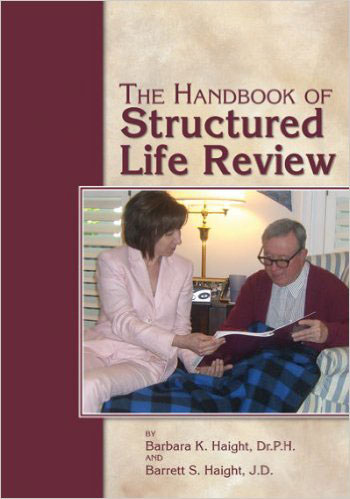 Clear and concise, this practical handbook synthesizes 30 years of research and practice using the Structured Life Review process. This approach is a one-on-one therapeutic technique that guides people in reflecting on their lives from early childhood to the present. It allows individuals to learn from past experiences, settle unresolved issues, and ultimately achieve a state of life acceptance. Participants benefit from increased life satisfaction, reduced depression, and the opportunity for reconciliation, acceptance, and serenity. Developed originally for older adults, Structured Life Review is appropriate for people of all ages. It is especially beneficial for individuals experiencing stress, undergoing major change, or coping with grief or a traumatic event.
Clear and concise, this practical handbook synthesizes 30 years of research and practice using the Structured Life Review process. This approach is a one-on-one therapeutic technique that guides people in reflecting on their lives from early childhood to the present. It allows individuals to learn from past experiences, settle unresolved issues, and ultimately achieve a state of life acceptance. Participants benefit from increased life satisfaction, reduced depression, and the opportunity for reconciliation, acceptance, and serenity. Developed originally for older adults, Structured Life Review is appropriate for people of all ages. It is especially beneficial for individuals experiencing stress, undergoing major change, or coping with grief or a traumatic event.
Following this user-friendly handbook, Structured Life Review sessions can be easily led by professionals and nonprofessionals alike: social workers, counselors, activity staff, or even volunteers. The book thoroughly explains the role of the Therapeutic Listener and describes useful counseling and communication techniques. Step-by-step goals, instructions, and sample dialogue for eight separate sessions provide a blueprint for conducting life reviews. Handy appendices include assessment tools and a Life Review Form with recommended questions for each session.
Dignity Therapy: Final Words for Final Days
– Harvey Max Chochinov, 2012
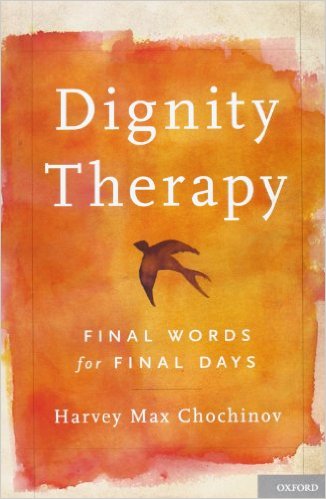 Maintaining dignity for patients approaching death is a core principle of palliative care. Translating that principle into methods of guiding care at the end of life, however, can be a complicated and daunting task. Dignity therapy, a psychological intervention developed by Dr. Harvey Max Chochinov and his internationally lauded research group, has been designed specifically to address many of the psychological, existential, and spiritual challenges that patients and their families face as they grapple with the reality of life drawing to a close. Tested with patients with advanced illnesses in Canada, the United States, Australia, China, Scotland, England, and Denmark, dignity therapy has been shown to not only benefit patients, but their families as well.
Maintaining dignity for patients approaching death is a core principle of palliative care. Translating that principle into methods of guiding care at the end of life, however, can be a complicated and daunting task. Dignity therapy, a psychological intervention developed by Dr. Harvey Max Chochinov and his internationally lauded research group, has been designed specifically to address many of the psychological, existential, and spiritual challenges that patients and their families face as they grapple with the reality of life drawing to a close. Tested with patients with advanced illnesses in Canada, the United States, Australia, China, Scotland, England, and Denmark, dignity therapy has been shown to not only benefit patients, but their families as well.
In the first book to lay out the blueprint for this unique and meaningful intervention, Chochinov addresses one of the most important dimensions of being human. Being alive means being vulnerable and mortal; he argues that dignity therapy offers a way to preserve meaning and hope for patients approaching death.
Dignity Therapy: Final Words for Final Days is a beautiful introduction to this pioneering and innovative work. With history and foundations of dignity in care, and step by step guidance for readers interested in implementing the program, this volume illuminates how dignity therapy can change end-of-life experience for those about to die – and for those who will grieve their passing.
Guiding Autobiography Groups for Older Adults: Exploring the Fabric of Life
―James E. Birren, Donna E. Deutchman, 1991
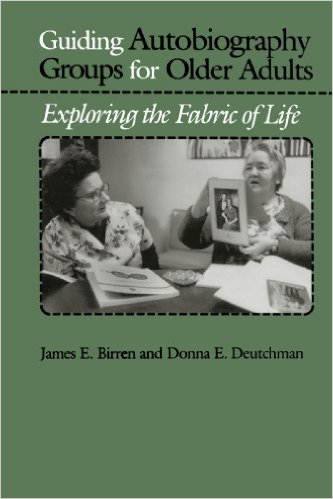 “Guided autobiography,” write the authors, “is ideally suited to foster in the older adult a belief that his or her life is meaningful and something of which to be proud.” This book helps professionals―at senior centers, community centers, and other service facilities―guide older adults and others in preparing their autobiographies.
“Guided autobiography,” write the authors, “is ideally suited to foster in the older adult a belief that his or her life is meaningful and something of which to be proud.” This book helps professionals―at senior centers, community centers, and other service facilities―guide older adults and others in preparing their autobiographies.
Many older adults, the authors explain, have limited social networks. Widowhood, retirement, and other “involuntary transitions” create a loss of roles, which can damage the older adult’s sense of identity and self-worth. Guided autobiography can be used very effectively with such persons―to promote their general well- being, develop friendships, and create increased feelings of self-sufficiency.
The book’s chapters treat such topics as eliciting themes from people’s lives, promoting creative thinking, facilitating group interaction, and mastering obstacles in the group process. Based on the authors’ fourteen years of experience leading groups in guided autobiography, this book will be of special interest to gerontologists, psychologists, social workers, and other professionals who conduct activity programs for older people.
